 Hereditary angioedema (HAE) is becoming much more genetically complex than was initially considered. Thus, the role of HAE genetics is expanding beyond research laboratories, and the genotyping of subjects suffering from HAE has become diagnostically indispensable in clinical practice. The synthesis and interpretation of the clinical and biochemical analyses to facilitate appropriate genetic test selection has thus also become significantly more complex. With this in mind, an international multidisciplinary group of 14 experts in HAE genetics and disease management was convened in October 2018. The objective was to develop clear, actionable, evidence- and consensus-based statements aiming to facilitate the communication between physicians treating patients with HAE and clinical geneticists, and thus promote the effective use of genetics in the management of the disease. Eleven consensus statements were generated, encompassing considerations regarding the clinical indications for genotyping patients with angioedema, the methods of detection of HAE-causative variants, the variant pathogenicity curation, the genotyping of patients with HAE in the clinic, and genetic counseling. These statements are intended both to guide clinicians and to serve as a framework for future educational and further genetic testing developments as the field continues to evolve rapidly. For more information click here.
Hereditary angioedema (HAE) is becoming much more genetically complex than was initially considered. Thus, the role of HAE genetics is expanding beyond research laboratories, and the genotyping of subjects suffering from HAE has become diagnostically indispensable in clinical practice. The synthesis and interpretation of the clinical and biochemical analyses to facilitate appropriate genetic test selection has thus also become significantly more complex. With this in mind, an international multidisciplinary group of 14 experts in HAE genetics and disease management was convened in October 2018. The objective was to develop clear, actionable, evidence- and consensus-based statements aiming to facilitate the communication between physicians treating patients with HAE and clinical geneticists, and thus promote the effective use of genetics in the management of the disease. Eleven consensus statements were generated, encompassing considerations regarding the clinical indications for genotyping patients with angioedema, the methods of detection of HAE-causative variants, the variant pathogenicity curation, the genotyping of patients with HAE in the clinic, and genetic counseling. These statements are intended both to guide clinicians and to serve as a framework for future educational and further genetic testing developments as the field continues to evolve rapidly. For more information click here.
Publications
Self-help for improving the quality of life of people with rare diseases and their families
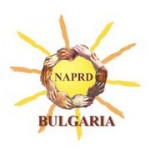 The National Alliance of People with Rare Diseases is organizing a training seminar on “Self-Help for Improving the Quality of Life of People with Rare Diseases and Their Families”. The event will be held on March 28-29, 2020, at “Rusalka” Hotel, Plovdiv, Bulgaria. Some of the topics, which will be discussed are going to be focused on the biggest problems such as “Stress from diagnosis and its effect on the immune system”, “Psychophysical practices for strength, health and immunity” and many other interesting discussions. The event will include fascinating speakers such as Dr. Maria Ivanovska, Marin Minchev and many others. For more information click here.
The National Alliance of People with Rare Diseases is organizing a training seminar on “Self-Help for Improving the Quality of Life of People with Rare Diseases and Their Families”. The event will be held on March 28-29, 2020, at “Rusalka” Hotel, Plovdiv, Bulgaria. Some of the topics, which will be discussed are going to be focused on the biggest problems such as “Stress from diagnosis and its effect on the immune system”, “Psychophysical practices for strength, health and immunity” and many other interesting discussions. The event will include fascinating speakers such as Dr. Maria Ivanovska, Marin Minchev and many others. For more information click here.
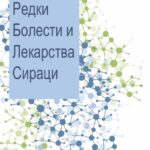 Since its inception 20 years ago, the National Institute for Health and Care Excellence (NICE) has established itself as a landmark in innovative healthcare technologies and the access to them. Indicative of the enormous interest in the experience of this organization is the existence of a special department for international cooperation, whose aim is to provide consultancy and expertise. Regulatory agencies around the world are closely following NICE’s decisions. A positive or negative opinion can predetermine patient access and clinical practice far beyond the UK. Almost at the very center of innovation in medicine and healthcare, in 2019 NICE announced that it would review and update its methodology for evaluating health technologies. For more information click here.
Since its inception 20 years ago, the National Institute for Health and Care Excellence (NICE) has established itself as a landmark in innovative healthcare technologies and the access to them. Indicative of the enormous interest in the experience of this organization is the existence of a special department for international cooperation, whose aim is to provide consultancy and expertise. Regulatory agencies around the world are closely following NICE’s decisions. A positive or negative opinion can predetermine patient access and clinical practice far beyond the UK. Almost at the very center of innovation in medicine and healthcare, in 2019 NICE announced that it would review and update its methodology for evaluating health technologies. For more information click here.
 The new issue of our scientific journal Rare Diseases and Orphan Drugs is now online. The issue contains 6 publications on various topics. The editorial is “ New methods for health technology assessement in response to the challenges of innovative therapies” If you would like to receive the latest information on rare diseases and orphan drugs, how the diagnostics and treatment is performed Bulgaria, please follow the link.
The new issue of our scientific journal Rare Diseases and Orphan Drugs is now online. The issue contains 6 publications on various topics. The editorial is “ New methods for health technology assessement in response to the challenges of innovative therapies” If you would like to receive the latest information on rare diseases and orphan drugs, how the diagnostics and treatment is performed Bulgaria, please follow the link.
 Randomized controlled trials (RCTs) are essential for the approval of new therapies; however, because of their design, they provide little insight concerning disease epidemiology/etiology and current clinical practice. Particularly, in lung disease, rigid inclusion/exclusion criteria can limit the generalizability of pivotal trial data. Noninterventional studies (NIS), conducted through the well-established mechanism of patient registries, are undervalued as a means to close data gaps left by RCTs by providing essential data that can guide patient care at different levels from clinical decision-making to health-care policy. For more information click here.
Randomized controlled trials (RCTs) are essential for the approval of new therapies; however, because of their design, they provide little insight concerning disease epidemiology/etiology and current clinical practice. Particularly, in lung disease, rigid inclusion/exclusion criteria can limit the generalizability of pivotal trial data. Noninterventional studies (NIS), conducted through the well-established mechanism of patient registries, are undervalued as a means to close data gaps left by RCTs by providing essential data that can guide patient care at different levels from clinical decision-making to health-care policy. For more information click here.
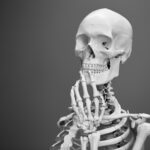 The application of massively parallel sequencing technology to the field of skeletal disorders has boosted the discovery of the underlying genetic defect for many of these diseases. It has also resulted in the delineation of new clinical entities and the identification of genes and pathways that had not previously been associated with skeletal disorders. These rapid advances have prompted the Nosology Committee of the International Skeletal Dysplasia Society to revise and update the last (2015) version of the Nosology and Classification of Genetic Skeletal Disorders. This newest and tenth version of the Nosology comprises 461 different diseases that are classified into 42 groups based on their clinical, radiographic, and/or molecular phenotypes. Remarkably, pathogenic variants affecting 437 different genes have been found in 425/461 (92%) of these disorders. By providing a reference list of recognized entities and their causal genes, the Nosology should help clinicians achieve accurate diagnoses for their patients and help scientists advance research in skeletal biology. For more information click here.
The application of massively parallel sequencing technology to the field of skeletal disorders has boosted the discovery of the underlying genetic defect for many of these diseases. It has also resulted in the delineation of new clinical entities and the identification of genes and pathways that had not previously been associated with skeletal disorders. These rapid advances have prompted the Nosology Committee of the International Skeletal Dysplasia Society to revise and update the last (2015) version of the Nosology and Classification of Genetic Skeletal Disorders. This newest and tenth version of the Nosology comprises 461 different diseases that are classified into 42 groups based on their clinical, radiographic, and/or molecular phenotypes. Remarkably, pathogenic variants affecting 437 different genes have been found in 425/461 (92%) of these disorders. By providing a reference list of recognized entities and their causal genes, the Nosology should help clinicians achieve accurate diagnoses for their patients and help scientists advance research in skeletal biology. For more information click here.
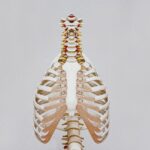 The international liver glycogen storage disease (GSD) priority setting partnership (IGSDPSP) was established to identify the top research priorities in this area. The multiphase methodology followed the principles of the James Lind Alliance (JLA) guidebook. An international scoping survey in seven languages was distributed to patients, carers, and healthcare professionals to gather uncertainties, which were consolidated into summary questions. The existing literature was reviewed to ensure that the summary questions had not yet been answered. A second survey asked responders to prioritize these summary questions. A final shortlist of 22 questions was discussed during an international multi-stakeholder workshop, and a consensus was reached on the top 11 priorities using an adapted nominal group technique.In the first survey, a total of 1388 questions were identified from 763 responders from 58 countries. These original uncertainties were refined into 72 summary questions for a second prioritization survey. In total 562 responders from 58 countries answered the second survey. From the second survey, the top 10 for patients, carers and healthcare professionals was identified and this shortlist of 22 questions was taken to the final workshop. During the final workshop, participants identified the worldwide top 11 research priorities for liver GSD. In addition, a top three research priorities per liver GSD subtype was identified.This unique priority setting partnership is the first international, multilingual priority setting partnership focusing on ultra-rare diseases. For more information click here.
The international liver glycogen storage disease (GSD) priority setting partnership (IGSDPSP) was established to identify the top research priorities in this area. The multiphase methodology followed the principles of the James Lind Alliance (JLA) guidebook. An international scoping survey in seven languages was distributed to patients, carers, and healthcare professionals to gather uncertainties, which were consolidated into summary questions. The existing literature was reviewed to ensure that the summary questions had not yet been answered. A second survey asked responders to prioritize these summary questions. A final shortlist of 22 questions was discussed during an international multi-stakeholder workshop, and a consensus was reached on the top 11 priorities using an adapted nominal group technique.In the first survey, a total of 1388 questions were identified from 763 responders from 58 countries. These original uncertainties were refined into 72 summary questions for a second prioritization survey. In total 562 responders from 58 countries answered the second survey. From the second survey, the top 10 for patients, carers and healthcare professionals was identified and this shortlist of 22 questions was taken to the final workshop. During the final workshop, participants identified the worldwide top 11 research priorities for liver GSD. In addition, a top three research priorities per liver GSD subtype was identified.This unique priority setting partnership is the first international, multilingual priority setting partnership focusing on ultra-rare diseases. For more information click here.
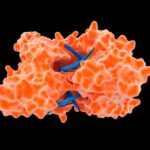 Alkaptonuria (AKU) is an ultrarare autosomal recessive disorder (MIM 203500) that is caused byby a complex set of mutations in homogentisate 1,2-dioxygenasegene and consequent accumulation of homogentisic acid (HGA), causing a significant protein oxidation. A secondary form of amyloidosis was identified in AKU and related to high circulating serum amyloid A (SAA) levels, which are linked with inflammation and oxidative stress and might contribute to disease progression and patients’ poor quality of life. Recently, we reported that inflammatory markers (SAA and chitotriosidase) and oxidative stress markers (protein thiolation index) might be disease activity markers in AKU. Thanks to an international network, we collected genotypic, phenotypic, and clinical data from more than 200 patients with AKU. These data are currently stored in our AKU database, named ApreciseKUre. In this work, we developed an algorithm able to make predictions about the oxidative status trend of each patient with AKU based on 55 predictors, namely circulating HGA, body mass index, total cholesterol, SAA, and chitotriosidase. For more information click here.
Alkaptonuria (AKU) is an ultrarare autosomal recessive disorder (MIM 203500) that is caused byby a complex set of mutations in homogentisate 1,2-dioxygenasegene and consequent accumulation of homogentisic acid (HGA), causing a significant protein oxidation. A secondary form of amyloidosis was identified in AKU and related to high circulating serum amyloid A (SAA) levels, which are linked with inflammation and oxidative stress and might contribute to disease progression and patients’ poor quality of life. Recently, we reported that inflammatory markers (SAA and chitotriosidase) and oxidative stress markers (protein thiolation index) might be disease activity markers in AKU. Thanks to an international network, we collected genotypic, phenotypic, and clinical data from more than 200 patients with AKU. These data are currently stored in our AKU database, named ApreciseKUre. In this work, we developed an algorithm able to make predictions about the oxidative status trend of each patient with AKU based on 55 predictors, namely circulating HGA, body mass index, total cholesterol, SAA, and chitotriosidase. For more information click here.
Instruction for the Applicants on how to follow the application status and next steps of the process updated
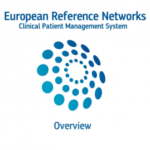 The European commission have posted instruction for the applicants on how to follow the application status and next steps of the process updated. The candidates have now the possibility to access a platform called “SANTE ERN HCP Application Status platform” directly from the SANTE Data Collection Platform which holds their ERN application. For more information click here.
The European commission have posted instruction for the applicants on how to follow the application status and next steps of the process updated. The candidates have now the possibility to access a platform called “SANTE ERN HCP Application Status platform” directly from the SANTE Data Collection Platform which holds their ERN application. For more information click here.
 Segmental progeroid syndromes (SPS) are rare hereditary diseases in which the affected individuals show signs of premature aging in more than one organ or type of tissue. We review the clinical and genetic features of some of these syndromes and discuss the extent to which their study affords a complementary opportunity to study aging processes in general. Segmental progeroid syndromes are a complex group of diseases with overlapping clinical features. Current research efforts focus on the elucidation of the molecular mechanisms of these diseases, most of which are very rare. This should enable the development of treatments that might be applicable to general processes of aging as well. For more information click here.
Segmental progeroid syndromes (SPS) are rare hereditary diseases in which the affected individuals show signs of premature aging in more than one organ or type of tissue. We review the clinical and genetic features of some of these syndromes and discuss the extent to which their study affords a complementary opportunity to study aging processes in general. Segmental progeroid syndromes are a complex group of diseases with overlapping clinical features. Current research efforts focus on the elucidation of the molecular mechanisms of these diseases, most of which are very rare. This should enable the development of treatments that might be applicable to general processes of aging as well. For more information click here.
